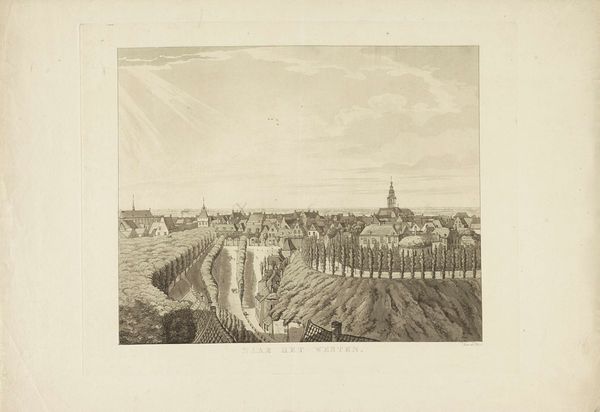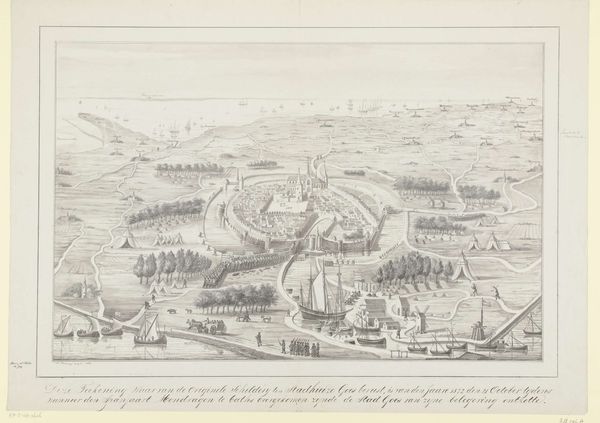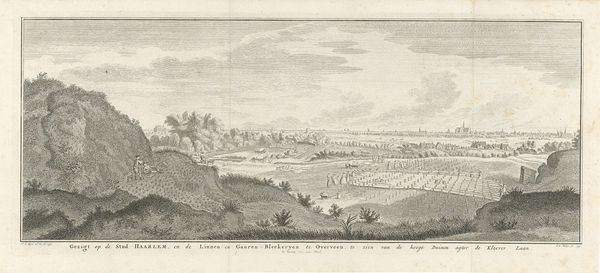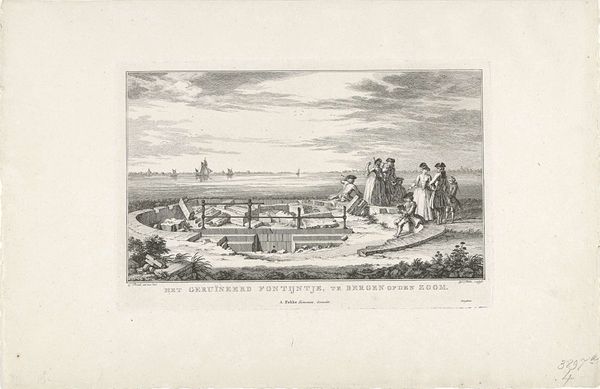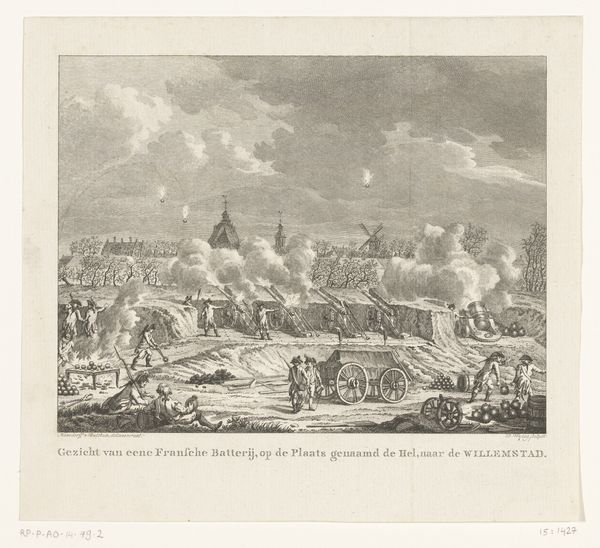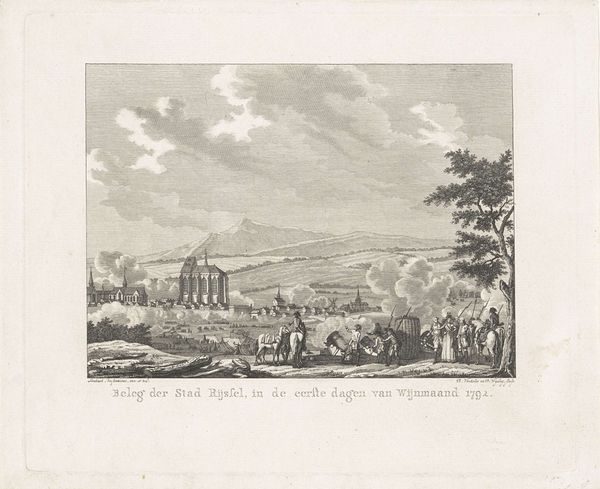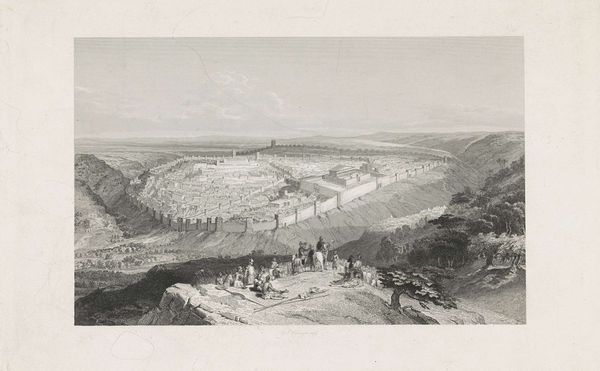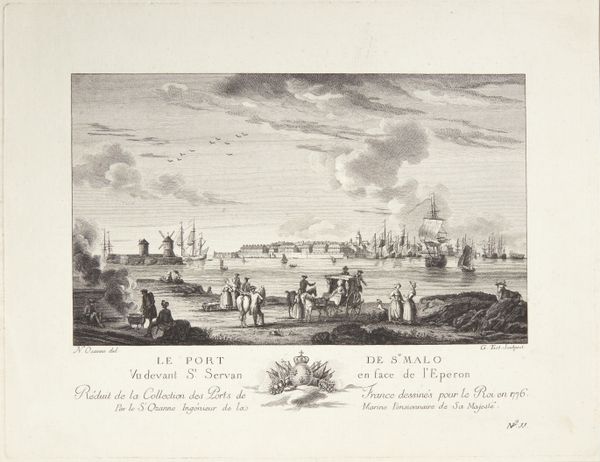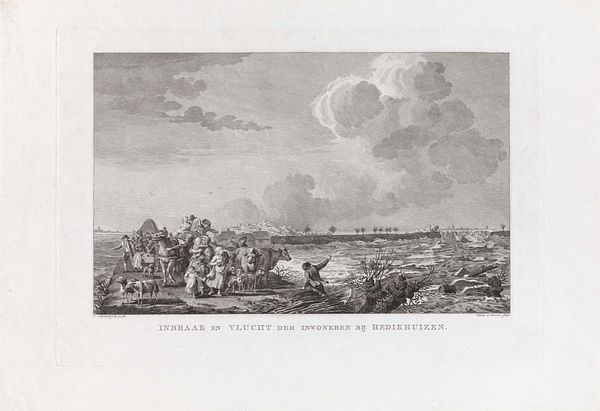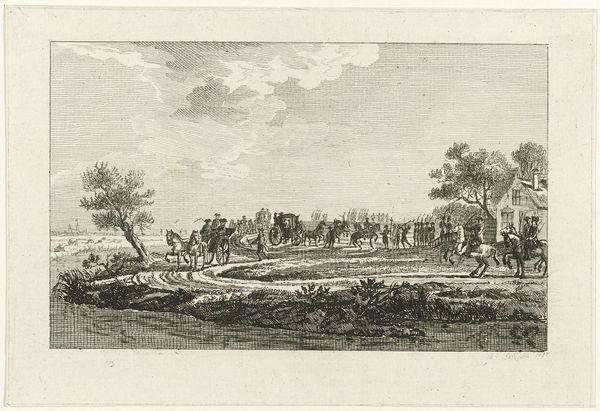
print, etching, engraving
# print
#
etching
#
old engraving style
#
landscape
#
cityscape
#
history-painting
#
engraving
Dimensions: height 177 mm, width 265 mm
Copyright: Rijks Museum: Open Domain
Editor: This is Simon Fokke’s 1772 etching, “De Bedekte Weg en de bressen in het bastion Coehoorn.” I’m really struck by the almost mundane portrayal of what must have been a site of intense labor and military strategy. What do you make of this image, looking at it from your perspective? Curator: What intrigues me most about this print is how Fokke represents the fortifications, the bastion Coehoorn. He meticulously depicts the means of construction – the layers of earth, the wooden palisades. We aren't just seeing a defense structure, but also an articulation of labor and materials transforming the landscape for strategic advantage. Do you notice the figures in the foreground, their attire? Editor: Yes, they seem like casually dressed observers, almost like tourists today looking at historical sites! Is that part of the statement? Curator: Precisely. This contrast raises questions about consumption and spectacle. Are these fortifications, signs of human effort and military might, becoming another object for the bourgeois gaze? The print, produced via etching – a repeatable and widely distributable process – amplifies this dynamic. Think of the economic implications of producing such prints. Editor: It’s fascinating how the print itself becomes part of the system, turning something functional, even potentially destructive, into a commodity. I hadn't thought about the etching process that way, almost like a factory for images. Curator: Indeed. Fokke is not merely documenting; he's participating in a complex interplay of labor, militarization, and consumption that shapes how his contemporary audience, and we ourselves, perceive these material realities. Editor: Thank you. It’s changed the way I’ll look at landscapes from this era; seeing the labor beneath the scenery, or perhaps *as* the scenery. Curator: A fresh way to see landscape's deep, material context. It's always a process of seeing labor, material, and capital intertwine.
Comments
No comments
Be the first to comment and join the conversation on the ultimate creative platform.
